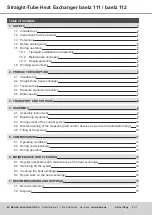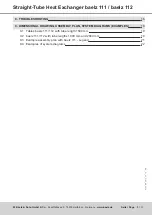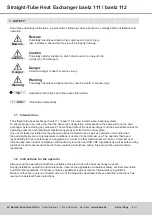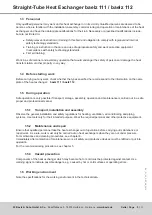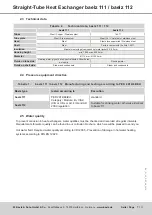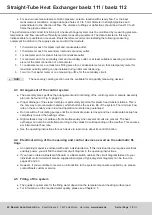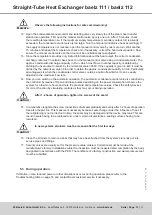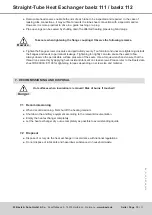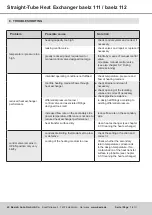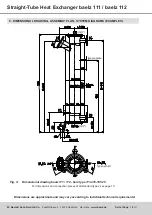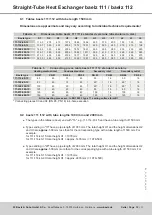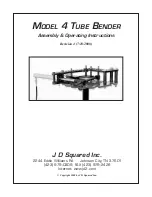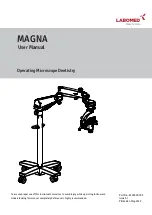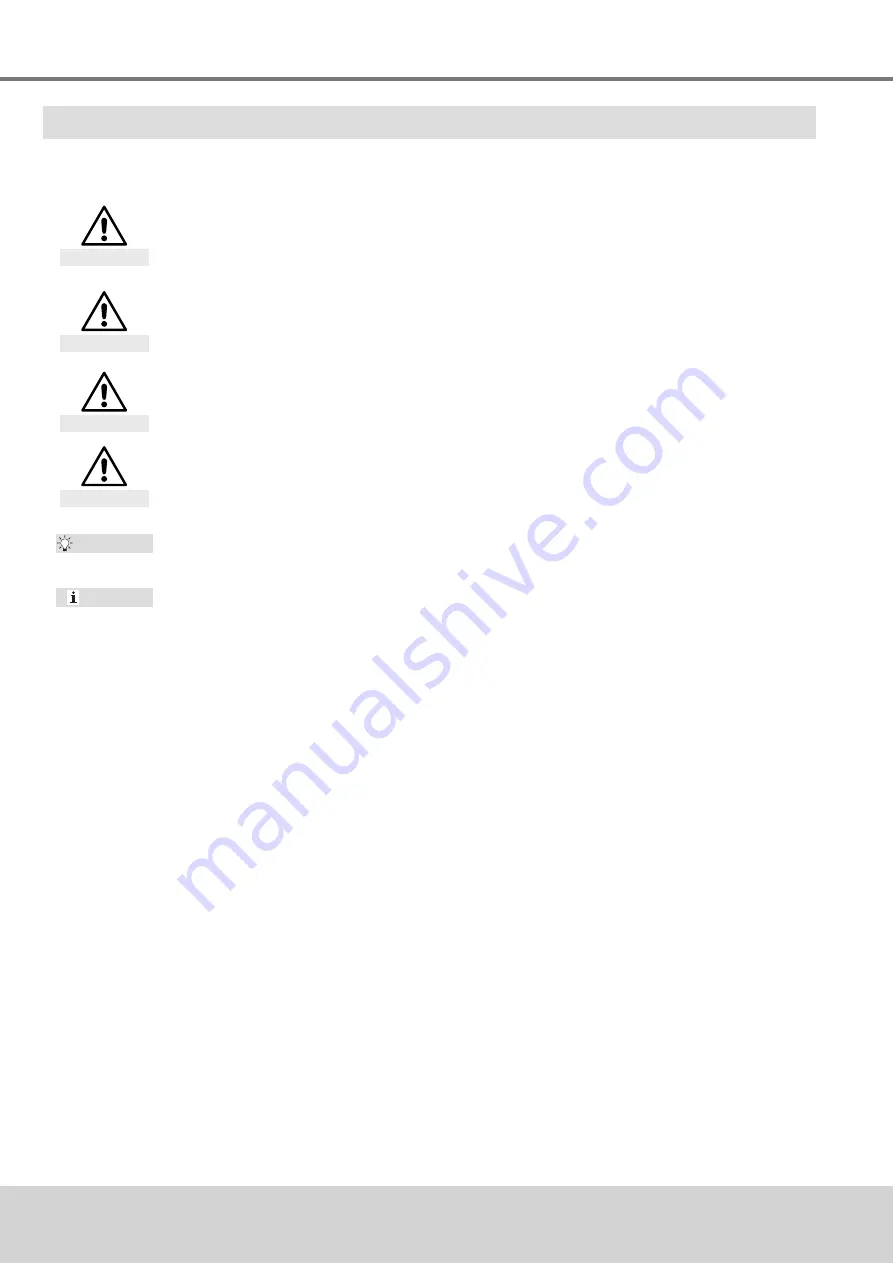
4 |
23
W. Baelz & Sohn GmbH & Co.
· Koepffstrasse 5 · 74076 Heilbronn · Germany ·
www.baelz.de Seite | Page
Straight-Tube Heat Exchanger baelz 111 / baelz 112
1. SAFETY
Read these operating instructions, in particular the following safety instructions, carefully before installation and
operation.
Beware
Potentially hazardous situation that could result in minor injury.
Also indicates a hazard that may result in property damage.
Beware
Caution
Potentially harmful situation in which the product or an object in its
vicinity may be damaged.
Caution
Danger
Imminent danger of death or serious injury.
Danger
Warning
Potentially hazardous situation that may result in death or serious injury.
Warning
Application instructions and other useful information.
Informative explanations.
1.1 Intended use
The straight tube heat exchanger baelz 111 / baelz 112 is used in warm water heating systems.
To ensure proper use, make sure that the above type designation corresponds to the name plate on the heat
exchanger before starting any measures. The technical data of the heat exchanger and the permissible values for
operating pressure and operating temperature apply as specified on the name plate.
Any use for tasks deviating from the above-mentioned intended use as well as operation under other than
the permissible pressure or temperature conditions is deemed to be improper use. The operator then bears
responsibility for risk to personnel and equipment as well as to other material assets in case of improper use!
Intended use also includes compliance with accident prevention and DIN VDE regulations as well as safe working
practices for all measures described in these operating instructions, taking into account the usual technical
regulations.
1.2 Instructions for the operator
Always keep the operating instructions available at the place where the heat exchanger is used!
During installation, operation and maintenance, observe the applicable occupational safety, accident prevention
and DIN VDE regulations. If necessary, observe additional regional, local or internal safety regulations.
Make sure that every person entrusted with one of the measures described in these operating instructions has
read and understood these instructions.
Info:
Tip:


